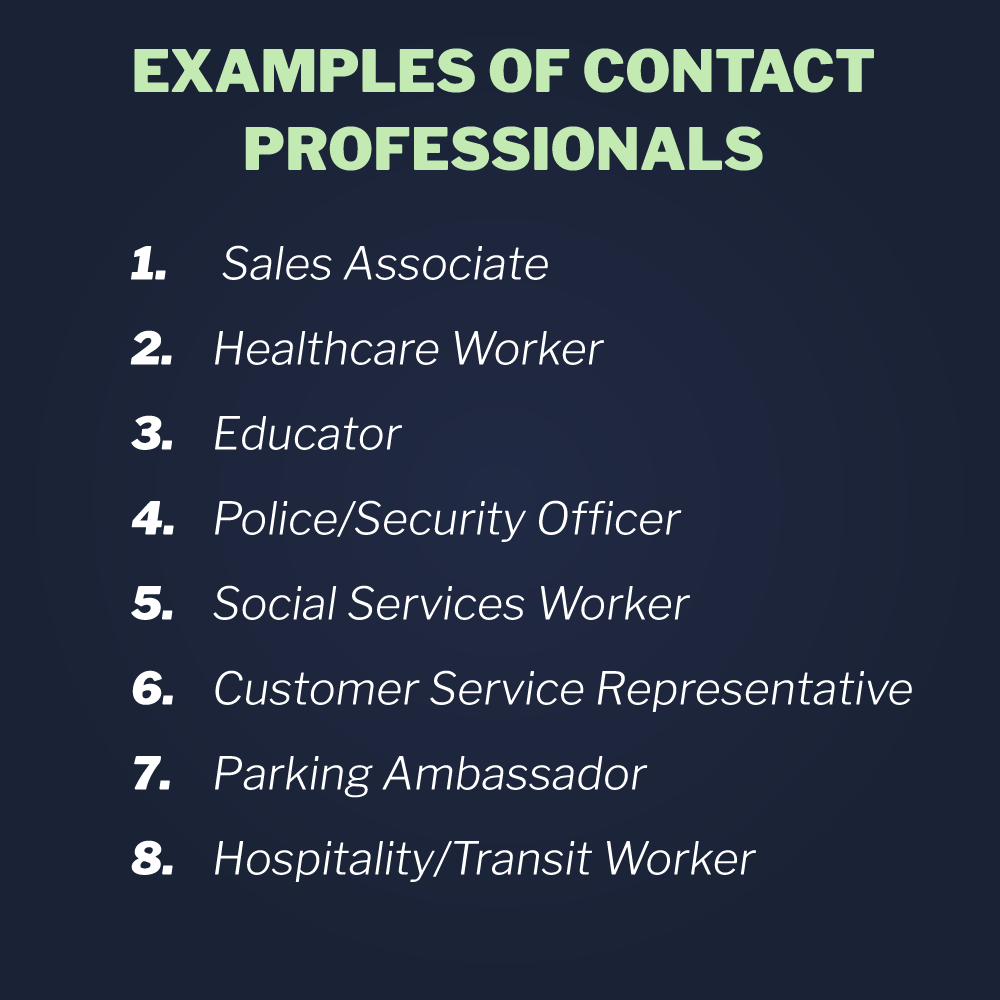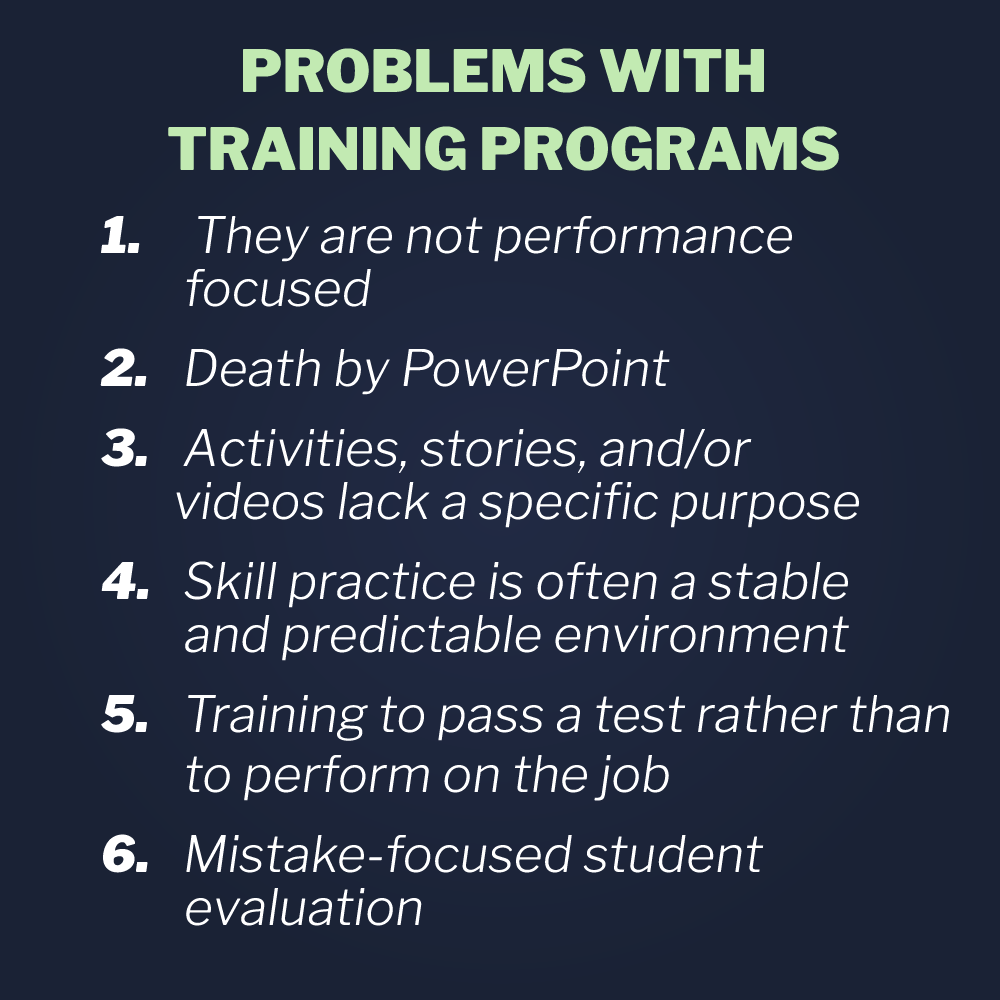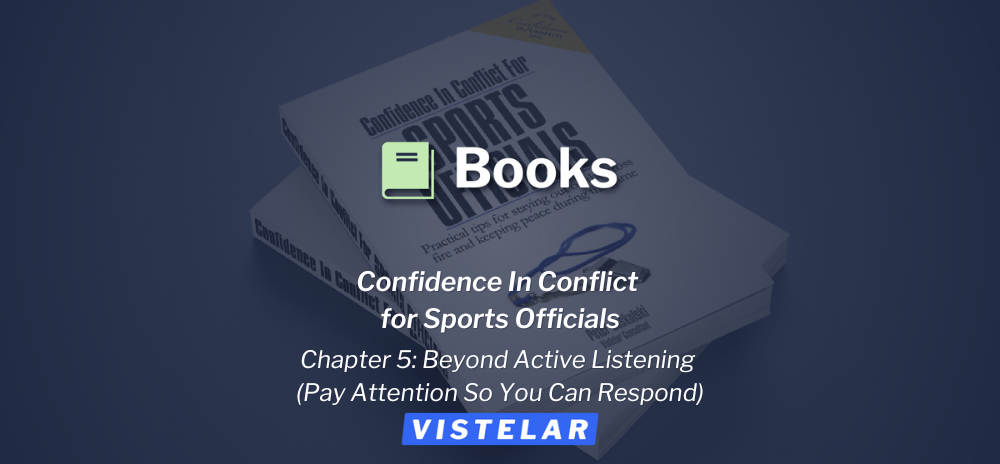Contact professionals spend the vast majority of their time directly interacting with the general public or their organization’s customers or clients.
Although contact professionals work in a variety of occupational fields, the bedrock skill that drives successful performance is the same. These people must be effective in their interactions with others; they must sound, look, and respond in ways that provide a positive experience with those whom they encounter.
It is this positive experience that creates an environment where the contact professional can more effectively complete their job duties.
Examples of Contact Professionals
One of the most common contact professional positions is in sales. Not only must a salesperson have strong product knowledge and selling skills, but they also must have strong interpersonal skills. In sales training, this is known as the know, like, trust principle. Unless prospects know, like, and trust someone, it is unlikely they are going to buy from that person regardless of the strength of the product expertise and sales skills.
product knowledge and selling skills, but they also must have strong interpersonal skills. In sales training, this is known as the know, like, trust principle. Unless prospects know, like, and trust someone, it is unlikely they are going to buy from that person regardless of the strength of the product expertise and sales skills.
Healthcare workers are another example of a contact professional. Like other contact professionals, these individuals need to be skilled at the fundamentals of interacting with others, such as listening, showing empathy, treating people with dignity, and using persuasive techniques. Although they need very specific medical skills, their effectiveness is primarily determined by how well they provide their patients with a positive experience. If they are not skilled in these interpersonal interactions, whatever they are trying to do medically, won’t be as effective.
Those are just two examples, but this principle is true for all contact professional jobs. Unless the individual can effectively interact with others, they will struggle to be successful.
Other examples of contact professionals include: educator, police/security officer, social services worker, customer service representative, parking ambassador, and hospitality/transit worker.
Need for Effective Training
Billions of dollars are spent on training contact professionals each year.1 This level of spending is commendable since these people do very important work and training is critical to doing this work well and better over time.
Zig Ziglar, a professional speaker and author of over 30 books, often told a story that emphasized this point. In the story, he was trying to convince the president of a large corporation that he would be able to increase the company’s success by providing more training to his sales team. The president was resistant to Ziglar’s advice and said, “We spend all of this time and money on training and then people leave.”
Ziglar responded with the now-famous quote, “The only thing worse than training an employee and having them leave is to not train them and have them stay.”
Training of any employee is important, but training of an organization’s contact professionals is vital. These people are the face of the organization. If they provide a positive experience for the people with whom they interact, it creates the foundation for a positive outcome for everything else the organization does.
Focus on Performance
With all the funds being spent on contact professional training, why are the results lacking? The simple answer is that most of this training isn’t very good.
The contact professional job is primarily a “performance” activity. The worker approaches another person or group of people, or they are approached by one or more individuals, and there is an interaction that can last from a few seconds to several hours. During this time, the contact professional is effectively “on stage” and performing for the person or persons.
Therefore, the training contact professionals receive should be almost solely focused on preparing them to be effective at this “performance,” but that is rarely the case.
As explained above, this performance must provide a positive experience for the customer while the contact professional is carrying out their discipline-specific job duties and the mission of their employer.
Two Other Unique Aspects of the Job
Beyond the need to provide a positive experience for their customers or clients while performing their discipline-specific job duties, contact professionals must deal with two unique realities of their jobs:
- Their every move is likely being recorded by a surveillance camera or a mobile phone. Therefore, if an interaction goes poorly, it might be displayed for all to see on social media or the evening news.
- Their interactions are likely with people they don’t know and occur in a wide range of environments, which may put them at risk of emotional harm and/or physical violence.
The training of contact professionals must include these two realities. They must always be trained how to look professional on camera to protect their own and their employer’s reputation while staying safe.
Specific Training Problems
The training of contact professionals should focus on how to integrate human relations skills, discipline-specific job duties, camera awareness, and personal safety. Unfortunately, attendees are often subjected to a combination of ineffective training practices, such as:
- Not performance focused
- Death by PowerPoint
- Activities, stories, and/or videos lacking a specific purpose
- Skill practice done solely in a stable and predictable environment
- Training to pass a test rather than to perform on the job
- Mistake-focused student evaluation
Not performance focused
For contact professionals, the focus must be on developing performance competencies acquired through drills, exercises, and scenarios. The goal must be to develop the ability to mesh multiple skills: interpersonal, technical, camera-awareness, and personal safety.
Death by PowerPoint
The training of contact professionals must cover how to sound, look, and respond in ways that create a positive experience for the person or persons with whom they are interacting, while simultaneously performing other job duties. Such skills cannot be learned through the typical information download epitomized by the successive slide clicks of a PowerPoint lecture.
Activities, stories, and/or videos lacking a specific purpose
While classroom activities, memorable stories, and videos have a role in contact professional training, they must only be used for teaching specific and important points.
Skill practice done solely in a stable and predictable environment
Practicing isolated skills in a stable and predictable environment (“drills”) has been shown to not produce sustainable skills.2 It may create the illusion of learning, but in reality, the skills acquired by this method deteriorate rapidly.
Force Science Institute3 analyzed over 10,000 videos depicting skill acquisition and erosion. When “block and silo” (drill) training was used, despite the dedication of talented and seasoned instructors, even simple skills deteriorated to where they were no longer functional. In some cases, this loss occurred even before the students graduated from the training program.
Practice sessions during contact professional training must go beyond drills and progress to exercises and scenarios in real world situations.
Training to pass a test rather than to perform on the job
Everything done in class must be single-mindedly focused on the attendee’s ability to immediately perform their duties when back on the job. The purpose of the training is not simply to learn new skills, it is to use new skills.
Mistake-focused student evaluation
When training contact professionals, it is important to have an emotionally safe and positive environment with the goal of learning, promoting creativity, building confidence, and creating lifelong learners.
Therefore, feedback should be positive in nature. In addition, the focus should be on each attendee setting their own learning goals rather than comparing themselves to other attendees.
More on Meshing of Skills
The job of a contact professional requires the use of multiple skills, and therefore, the training should be focused on how to effectively merge those skills. Successful training will address how to perform the full range of job duties, including human relations, discipline-specific responsibilities, camera awareness, and staying safe. In addition, training must consider the application of the organization’s policies and procedures, ethics, and values.
For example, in police work, even the most routine interactions require an officer to respond to ever changing circumstances while applying a set of integrated skills, such as threat assessment, resource evaluation, legal considerations, communication, situational awareness, proficiency with a range of technical equipment, and scene security. However, police training often teaches each skill in separate blocks rather than as an integrated whole.
Knowledge and drill-focused training, while simpler, does not produce long-lasting skills. This approach may enable attendees to pass written tests and perform in a controlled environment but proves ineffective when the attendee is later faced with real-world situations demanding an integrated response.








